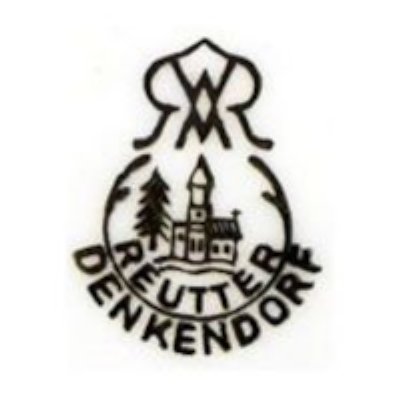
Image 010113-02-01
Used between 1954 and around 1975, the first company mark.
Born on September 19th 1921, Martha Zimmermann (nicknamed Martl since childhood) originally worked as a teacher in the region of Posen during WWII. After the war, all teachers were under general suspicion of being former Nazis and therefore had to wait until their political background had been verified before being allowed to work as teacher again; this process could take months.
The then 24-year-old therefore decided to become an apprentice at a local pottery. When her apprenticeship ended the master potter she worked for had a special request regarding her journeyman's piece. He had given his little daughter a dollhouse for Christmas and requested that Martha should design and provide a set of dishes and dinnerware, scaled down to match the dollhouse.
At that time it was very hard to purchase additions for dollhouses of certain sizes; even if one found something more or less matching, the prices were extremely high. Martha did not rest until she was able to present a whole set of dinnerware including matching cooking dishes. It had been quite a challenge, however it became obvious that she had a perfect business idea at hand.
Early in 1948 Martha married Willy Reuter; together they founded their own small pottery which was registered the same year. It was however a one-woman show as Martha designed, crafted and decorated. Willy on the other hand ensured funding through his job as precision engineer.
The small business at first only produced handmade crockery on a potter's wheel; items did not even receive a base mark or brand. Already in 1951 they presented their first collection at the emerging trade fair for children's toys, the later world famous 'Spielwarenmesse' in Nürnberg. At that time the fair was pretty small and located in the Wieselerhaus in Nürnberg;. While the young business of course could not afford its own booth yet, they still managed to fit in as a co-exhibitor.
Money was still pretty tight; travelling to Nürnberg as couple and renting an hotel room would have been impossible. Like many other husbands, Willy Reutter did not want his wife to travel alone per train. And so he travelled to Nürnberg alone, carrying nothing more than a suitcase with goods and a small camping table for presentation. The trip paid off and their first ever fair visit was an overwhelming success.
While the overall acceptance was of course a most pleasing result, this also showed up one of them main problems that the young company had to deal with. All items were hand turned on a pottery wheel and the production process was already pretty time consuming; having to rely on Martha to design, produce and (when applicable) decorate the items put far too much pressure on her.
The couple therefore in 1954 decided to switch their production to porcelain. This would easily allow higher production numbers as a porcelain press could produce more items in an hour than a potter could make in a whole day. With the change in production techniques also came a rename of the business, with a contraction of their first name initials plus the family name : M.W. Reutter was born. At the same time they finally agreed on marking their highly successful products; their first base mark consisted of a stylized depiction of the Cloister Denkendorf bell tower, placed above the words Reutter and Denkendorf.
Baden-Württemberg as location in particular caused problems, as there was no supporting infrastructure in regard of suppliers, mills or mines; sourcing raw materials from the Bavarian Forest region on the other hand required a lot of effort and was not cheap. With no other pottery- or porcelain-related production near them, acquiring knowledge on certain methods was often a matter of plain trial and error. The entire production process had to be set up from scratch, which at the same time allowed it to be geared towards self-sufficiency in all areas. Willy's background in precision engineering and machinery construction for example allowed him to develop a method of extruding small porcelain pieces out of a press bed, and idea later adapted by other factories. In 1956, business was still constantly increasing and Willy decided to quit his job as precision engineer as to help his wife in the company full time.
Even if the market for doll house supplies had been promising, Martha concentrated on creating a wider product range which included many items neglected by other producers. Items like ashtrays and perfume diffusers were of course also offered by other companies, however it was the mix with the not so common items which attracted customers. One great seller for example were so-called mosaic tables, complete sets for hobbyist which included wooden table kits with different assortments of mosaic tiles, allowing people to either create their own designs or use one of the provided design templates. And, if desired, you could of course purchase the matching ashtray, vase, or snack dishes. Another huge success was porcelain whiteware which came with decoration templates and coloring ideas, perfect little starter kits for children and grown-ups alike.
Such sets guaranteed stable profit while experimenting with different product ideas and improving the production process. And the annual toy fair in Nürnberg was the perfect showcase on what customers liked and what other companies provided, allowing Martha and Willy to make plans for the future. It did however take until the mid-1960s before the first complete assortment of children's teas sets, additional doll douse miniatures, and accompaning giftware made from porcelain was presentable.
As demand was still on the rise and the location in Denkendorf did not allow any expansion, an additional factory location near the town of Nürtingen was acquired in 1968. For the next few years all items were produced in the new factory and then decorated, finalized, and readied for shipping in Denkendorf. The product range also increased, for example schnapps steins were made specifically for distilleries in the Black Forest, Austria and Switzerland. Next to beer mugs and lard pots the business also started to offer a large line of souvenirware. During this period, all miniatures were particularly colorful and mostly decorated with rural motifs.
In the early 1970s, Reutter introduced their first licensed decor, "Sarah Kay", created by Valentine Publishing artist Vivien Kubbos. The Australian's drawings were very popular at the time and the licensed products made Reutter even better known as they gave them a large platform to present the products worldwide. This decor, by the way, was one of the first to be marketed by the licensor across industries in the way we know of most licensed motifs today.
Reutter in 1979 decided to relocate the entire company back into a single building after the town of Denkendorf had created its own dedicated area for industry and commerce. Such locations offered lucrative contracts in regard of trade taxes and rent, at the same time providing easy access to the surrounding motorways and railroads. This relocation took place in 1980, not only improving coordination but also saving lots of time and money regarding the transport of half-finished goods. The eldest son of the couple, Bernd, had already joined the company in 1974. His younger brother, Bertram, joined the company during the relocation to Denkendorf. Together, they optimized production processes and promoted the expansion of global sales, at the same time slowly computerizing parts of the business.
Miniatures (mostly in the common Geman scale of 1:9) had become increasingly popular over time, the real boom setting in during the 1980s. What had started off as doll house accessories had by then evolved into a wide assortment of gifts and collector items; the company produced all kinds of items, from children's mugs, spoons and egg cups up to decorative eggs, thimbles, keyrings, pillboxes, and complete tea sets in picnic baskets.
As to further improve international sales, Reutter from 1990 onward slowly adapted the UK/US scale of 1:12, nowadays a standard size. Another development included wooden accessories of the same scale, often furniture like tables, chairs and shelves. In 1993 Reutter acquired the rights to transfer the world-famous drawings by Sister Maria Innocentia Hummel onto two-dimensional porcelain pieces, the same year issuing the motifs "Er liebt mich" and "Maiglöckchen". Further exclusive copyright licences were acquired over time, including Brambly Hedge, Beatrix Potter, Flower Fairies, Hermann Teddies, and Paddington Bear.
1993 was also the year in which Willy Reutter died. He was in 1997 followed by Martha; both had been very active right until their deaths and with their advice and support had contributed towards further development of the company. High quality standards and a large variety of items made Reutter known worldwide, their items around the year 2000 being sold in over 27 countries. All product groups are adapted and expanded according to fashion and trends almost every year and many of the dioramic arrangements have become deeply loved classics.
From 2012 onward, Reutter added more miniatures to the Souvenir Collection, a diorama-style series of miniature displays and tables. Up until 2013, Reutter had adapted over 16 different Hummel motifs. Commemorating 20 years of Hummel art on Reutter porcelain, the motif "Ständchen" was added to the range. The media presence of the company also changed in 2012 when son Philipp Reutter, a business economist, and daughter Michelle Reutter, a communications designer, joined the business. A large selection of miniatures, miniature furniture and wall pictures, as well as miniature gifts, was introduced via the new online shop which launched 2015. Reutter could also be found on various social media platforms, offering exciting insights into production and the company itself.
Due to the economic challenges of the pandemic, the Reutter company decided to concentrate on its core business and follow its passion for miniatures, dropping all other product lines. At the same time the company was re-founded and Reutter Porzellan became Reutter Miniaturen, the new company name clearly showing their new orientation.
The family business also moved to a new all-in-one office and production location in Ostfildern-Kemnat, with the new location being more suitable for the changing needs of miniature production. With the move also came a generational change and daughter Michelle Reutter was appointed as managing director, thus ensuring the existence and further development of the company.
The mark type used on miniatures between the 1980 and 1990 is sometimes dated differently, depending on source. The one with W.-GERMANY is however definitely the latest and was used until 1989/1990.

Image 010113-02-01
Used between 1954 and around 1975, the first company mark.
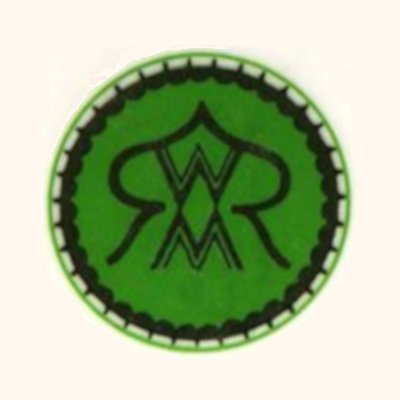
Image 010113-02-02
Used between around 1975 and around 1980, transfer applied.
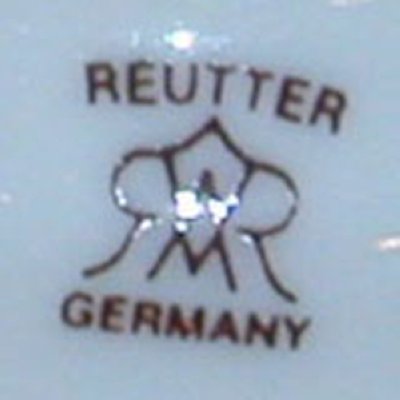
Image 010113-02-03
Used between around 1980 and around 1984, on miniatures.
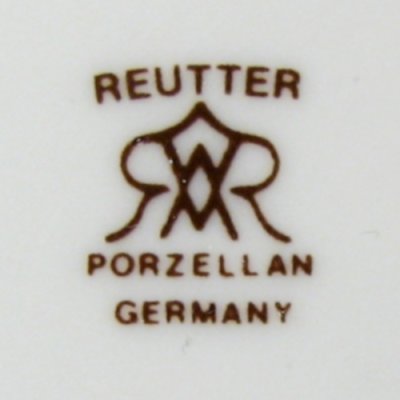
Image 010113-02-04
Used between around 1980 and around 1984, on miniatures.
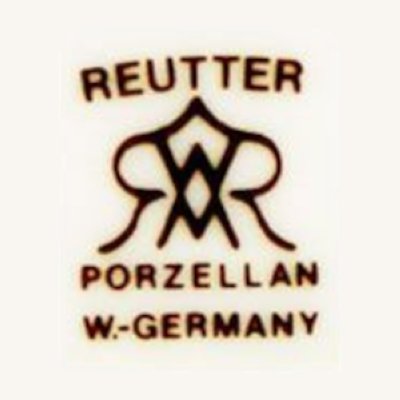
Image 010113-02-05
Used between around 1982 and around 1990, on miniatures.
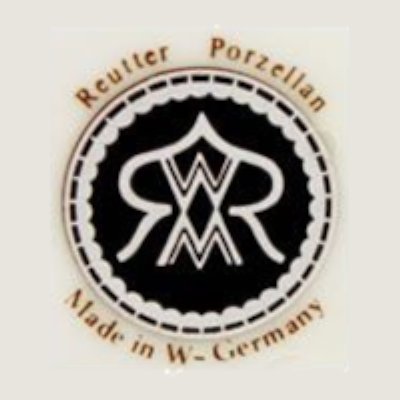
Image 010113-02-06
Used between around 1980 and around 1990, transfer applied.
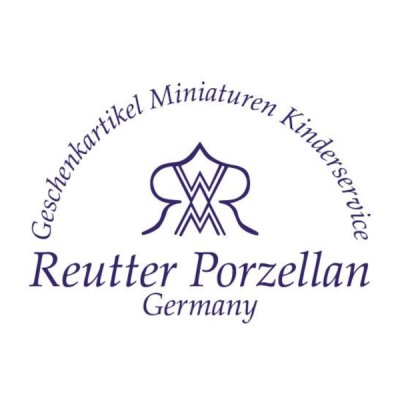
Image 010113-02-07
Used between 1990 and 2021. This is the basic mark form template, it was changed according to series.
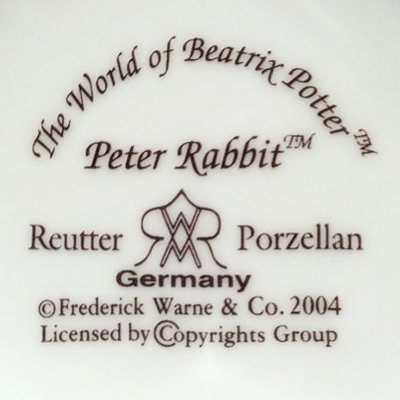
Image 010113-02-08
Used between 1990 and 2021. Here an example of the Peter Rabbit series from 2004.
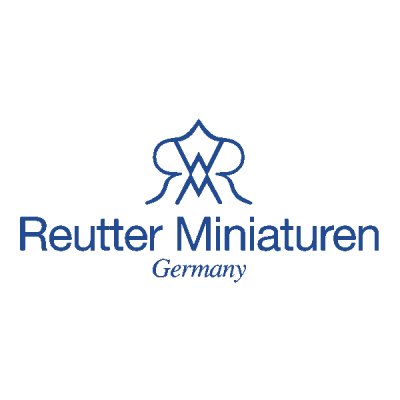
Image 010113-03-01
Used from 2022 onward.
© 2004-2025 C.S.Marshall, all rights reserved